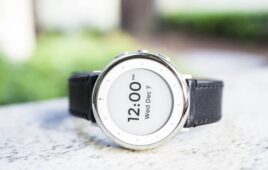Improved accuracy measurement in linear ball rail system benefits medical applications such as imaging, radiation treatment and bone density measurement.
The field of medicine has a constant demand for better and more capable devices and equipment. Linear rails meet much of this demand and can be found in machines used directly with patients, such as radiotherapy and MRI machines; high-precision machine tools that make small parts used in medical devices; laboratory equipment, and even equipment and tools used in non-hospital environments, such as dentistry and physical therapy. But, as accuracy requirements increase, can linear rails deliver?

Cross roller slides are the most commonly used product for high accuracy applications but typically do not work well for strokes over 600 mm.
While accuracy in linear guides depends on many factors, one especially critical factor is the smoothness of ball re-circulation inside the runner block as it travels along the rail. Applications at the very high end of the accuracy spectrum, such as gauging, bone density measurement, radiation treatment, and microelectronics can be adversely affected by any roughness in the bearing tracks. This roughness can sometimes be felt by hand as small pulsations from the balls traveling over the rough areas.

Redesigned entry and exit zone raceways reduce rolling, pitching, and yawing deviations.
The pulsations cause pivoting or rotation of the bearing about its axis. For extremely precise applications this rotation is magnified when transmitted over a distance to a measurement point. Even minute movement of the balls in the re-circulation chamber can cause dramatic differences in machine output. As a result, the most commonly used product for high-accuracy situations has been the cross roller slide because there are no re-circulating components.

Split view shows how steel insert works with balls on the high-precision product.
However, the lack of re-circulating components in the cross roller slide limits stroke. Typically anything over 600 mm is simply too long. In addition, cross roller slides lack the load capacity and rigidity of linear guides. Therefore, this type of linear guide, the cross roller slide, would not work for an MRI machine or X-ray machine with longer strokes.
A new measurement technique, however, can ensure the desired accuracy in rail and block style linear guides.

Enhancements to the ball raceways result in 60% less deviation as the high-precision runner block travels along the rail.
Minimizing pitch, roll and yaw
Normally, accuracy measurements in linear guides are defined by the height and the width variation as measured from the middle of the runner block. However, measurement of height and width alone do not account for any pivoting of the bearing about the X, Y or Z axis (pitch, roll, and yaw). Thus, although the height or width of the bearing may be extremely accurate when measured from the middle of the runner block, there may be some inaccuracy about the center line of the bearing due to ball pulsation–causing the bearing to slightly rotate about its axis.
To minimize pitch, roll, and yaw, alter the geometry of the re-circulation pathways and eliminate roughness at key transition points: the entry zone, the load zone (where the ball is actually under load), and the exit zone.
The entry zone is the point just before the ball enters the load zone. At this point the ball is circulating through the end of the bearing and is rounding some critical radii before it re-enters the load zone. As it passes these points, the rotation of the ball can be affected by surface roughness and contact angles inside the bearing, creating friction as well as additional unwanted motion.
In the load zone, the ball is rotating, and motion is typically consistent with uniform ball spacing. But as it approaches the exit zone, it goes from a point of load to no-load and is shot out of the load zone into the end of the bearing. The exit zone area is characterized by inconsistent ball spacing and ball-to-ball contact due to balls being shot from the load zone. Interactions in each of these key transition points lead to ball pulsations that can be felt when moving the bearing by hand. It is these ball pulsations which ultimately cause rocking motions that affect the overall smoothness of travel and therefore, affect the precision of a machine measuring bone density or other highly accurate medical devices.
An example of a system that has altered its geometry is the Ball Rail® system. To insure smooth motion as the balls circulate in the bearing raceways, the system uses a steel insert and relief zones that dampen the ball entry forces at the ends of the bearing. This configuration eliminates the rough motion and rolling of the ball rail system about its axis and creates accurate height and width dimensions as well as reliable linear motion about all axes. Our tests show a 60% reduction in pitch, roll, and yaw compared to standard linear guide systems.
Bosch Rexroth Corp.
www.boschrexroth-us.com
::Design World::




